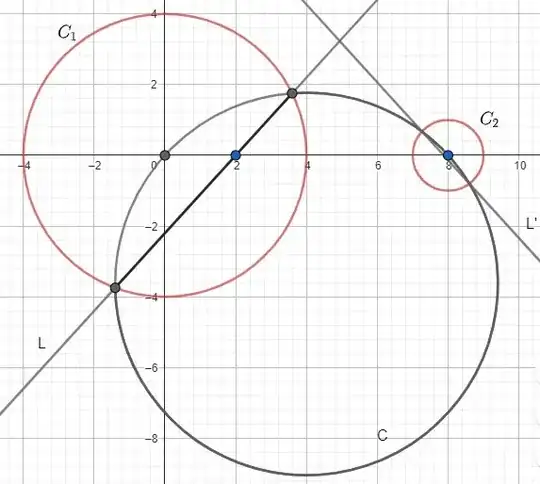
Fig. 1: $\textit{The image of line L by the first inversion is circle C}.$ $\textit{As this circle passes through the center of the second inversion,}$ $\textit{it is transformed into line L'.}$
Here is an answer using complex representation of inversions.
(refer to this site and/or this question of mine for explanations)
$$z \xrightarrow{ \ \ \ T_1 \ \ \ } \underbrace{\frac{16}{\overline{z}}}_{T_1(z)}=\zeta\xrightarrow{ \ \ \ T_2 \ \ \ } \underbrace{8+\frac{1}{\overline{\zeta}-8}}_{T_2(\zeta)}=Z$$
giving by composition:
$$Z=\underbrace{8+\frac{z}{16-8z}}_{T_3(z):=T_2 \circ T_1(z) }$$
with inverse transform
$$z=\frac{16 Z - 8}{8Z - 63}\tag{1}$$
Now let us recall the general equation of a "cline", a term used in the first reference I gave above for encompassing at the same time a circle or a straight line in the complex plane :
$$Az\overline{z}+\overline{B}z+B\overline{z}+C=0 \ \text{with} \ A,C \in \mathbb{R}\tag{2}$$
if $A \ne 0$, it is a circle.
if $A=0$, it is a straight line ; in this case $B=\alpha+i\beta$ gives a normal vector $\binom{\alpha}{\beta}$ to the line.
Consider now a straight line $L$ with equation:
$$\overline{B}Z+B\overline{Z}+C=0 \ \text{with} \ C \in \mathbb{R}\tag{3}$$
Let us see the constraint that must be placed on its coefficients $B$ and $C$ for having an image $L'$ which is itself a straight line.
The equation of $L'$ will be obtained by plugging relationship (1) into (3). If we reduce to a same denominator, we will get the equation of a cline with a term $k Z\overline{Z}$. This cline will be a line if and only if coefficient $k$ is $0$.
A little calculation shows that this condition is equivalent to:
$$128(\overline{B}+B)+64C=0 \ \iff \ C=-2(B+\overline{B})$$
which means, using (3), that the equation of the line must be:
$$\overline{B}(z-2)+B\overline{(z-2)}=0 \ \text{for any } \ B$$
which is the general equation of a line passing through point $z=2+0i$.
We find back in this way the result of Nicholas.
